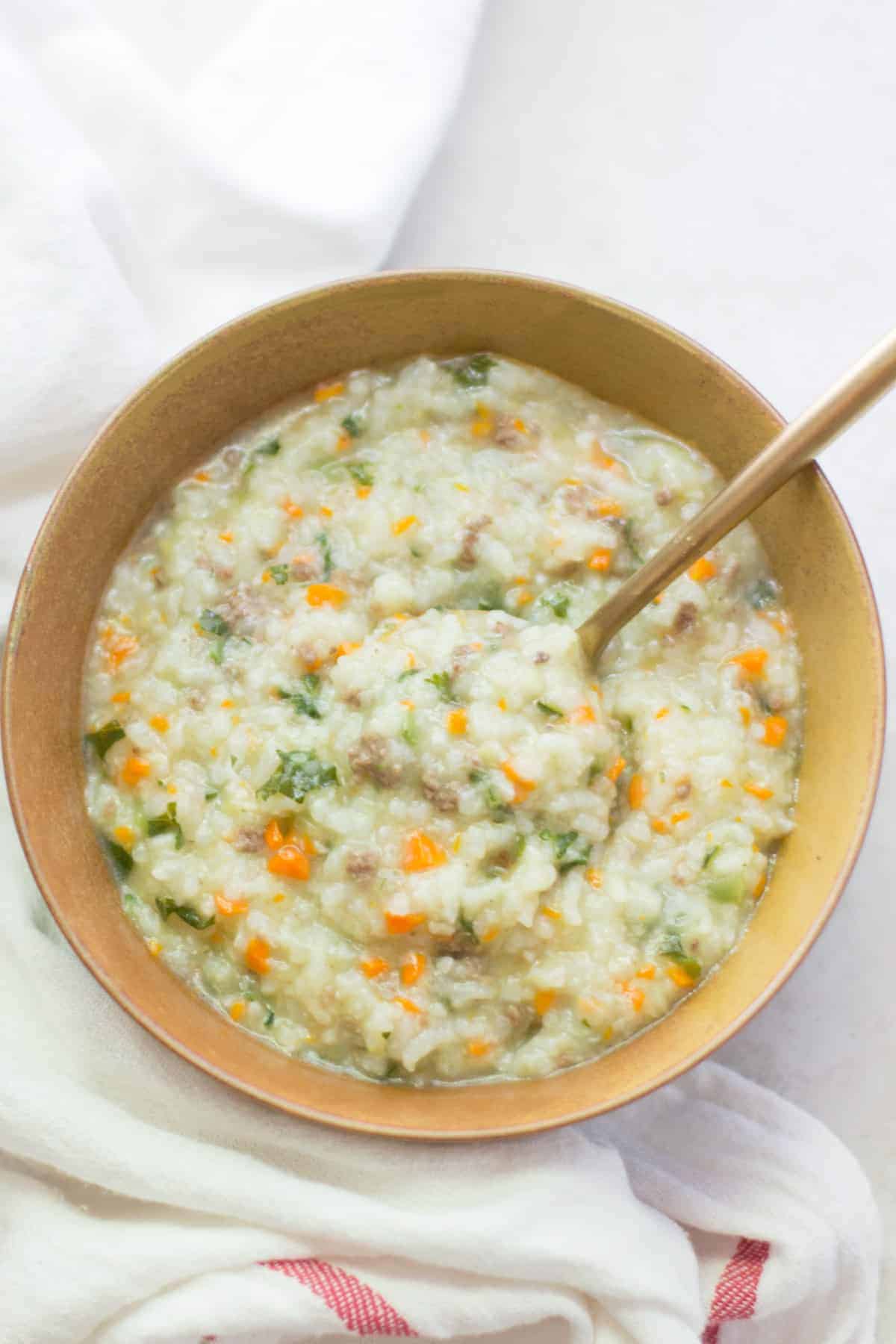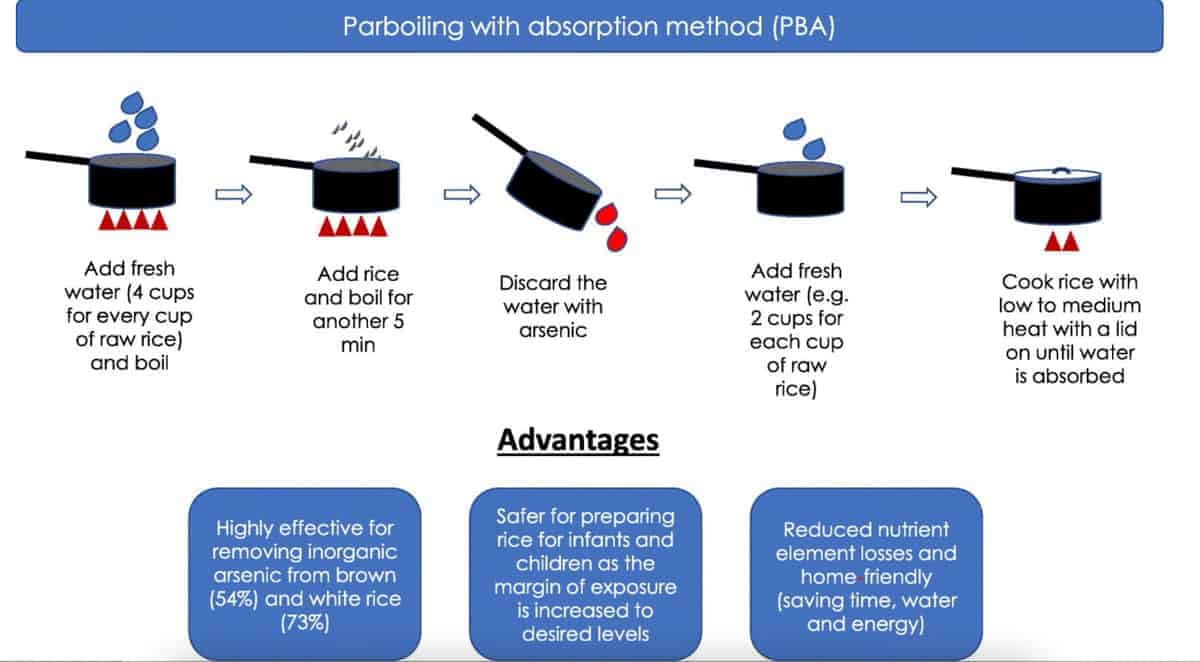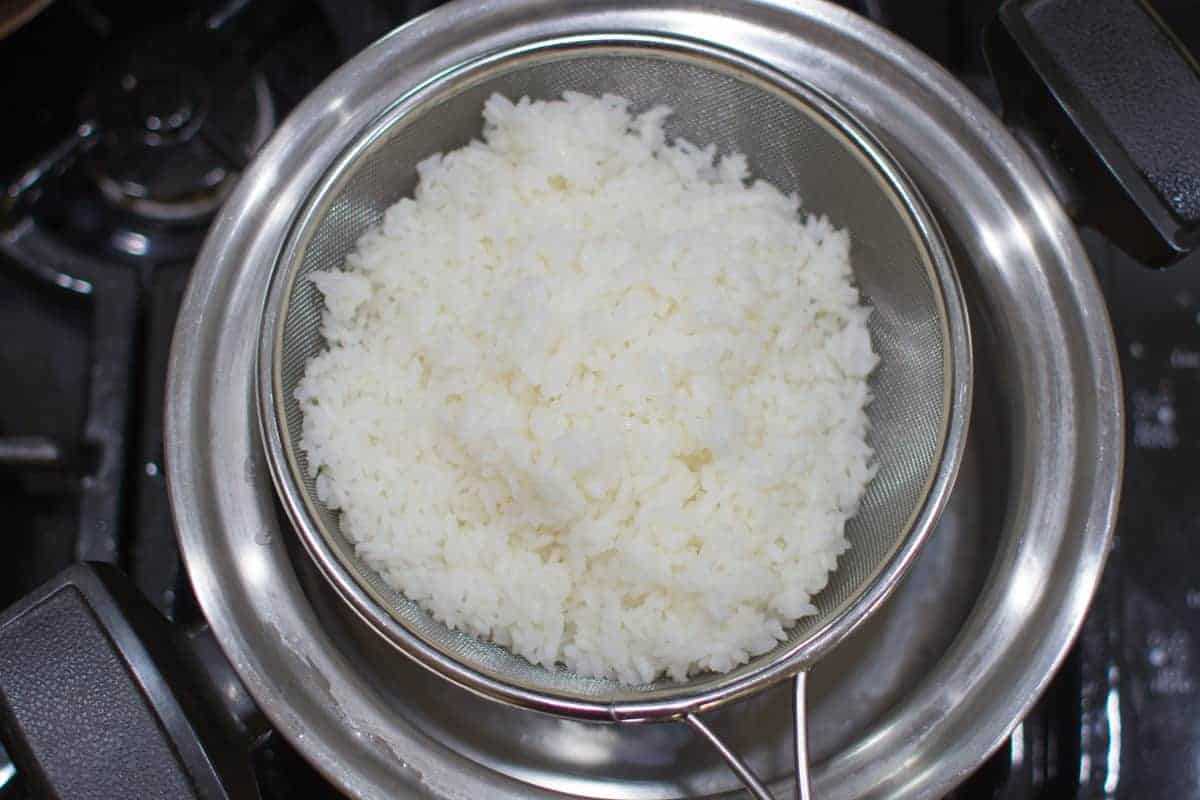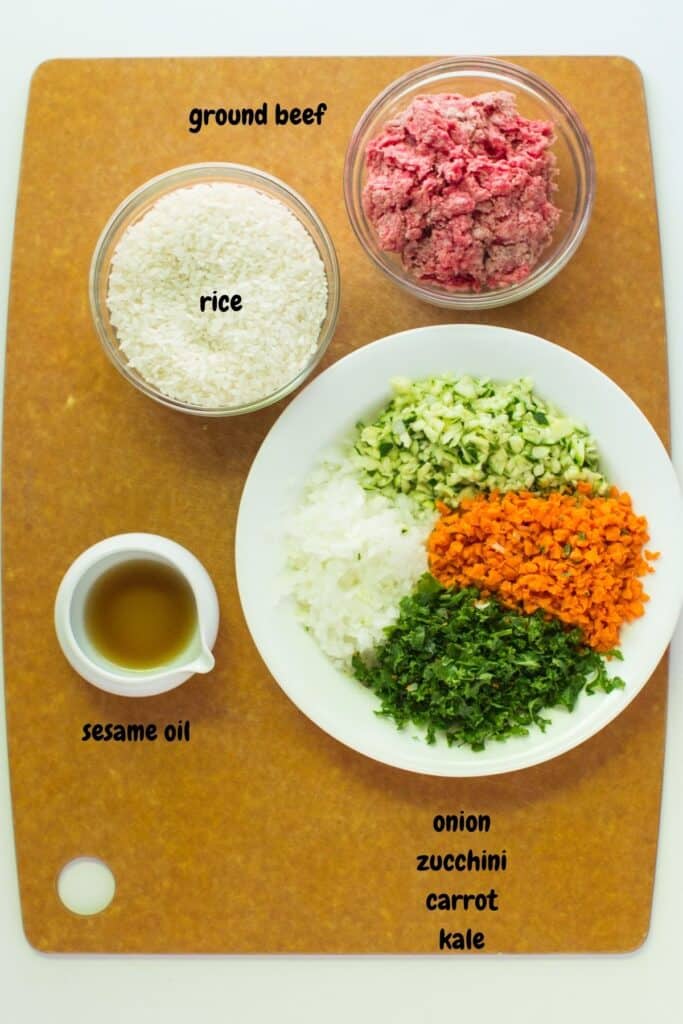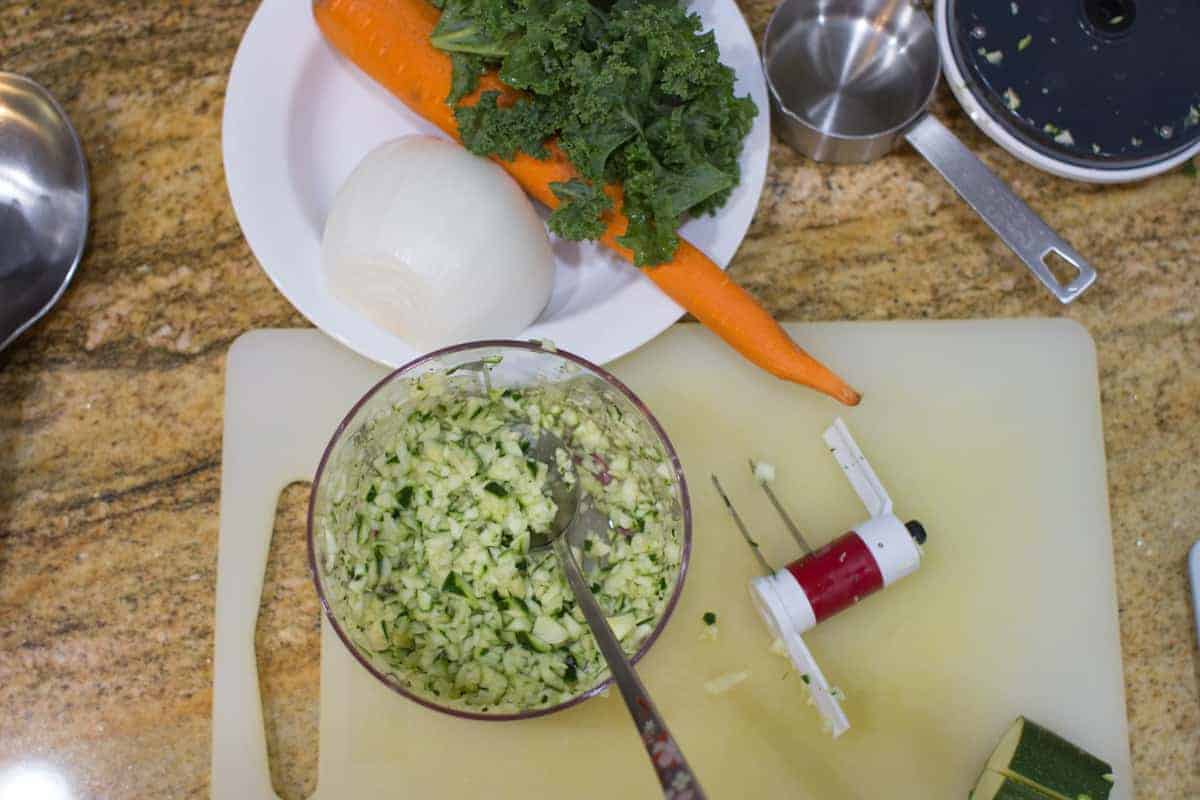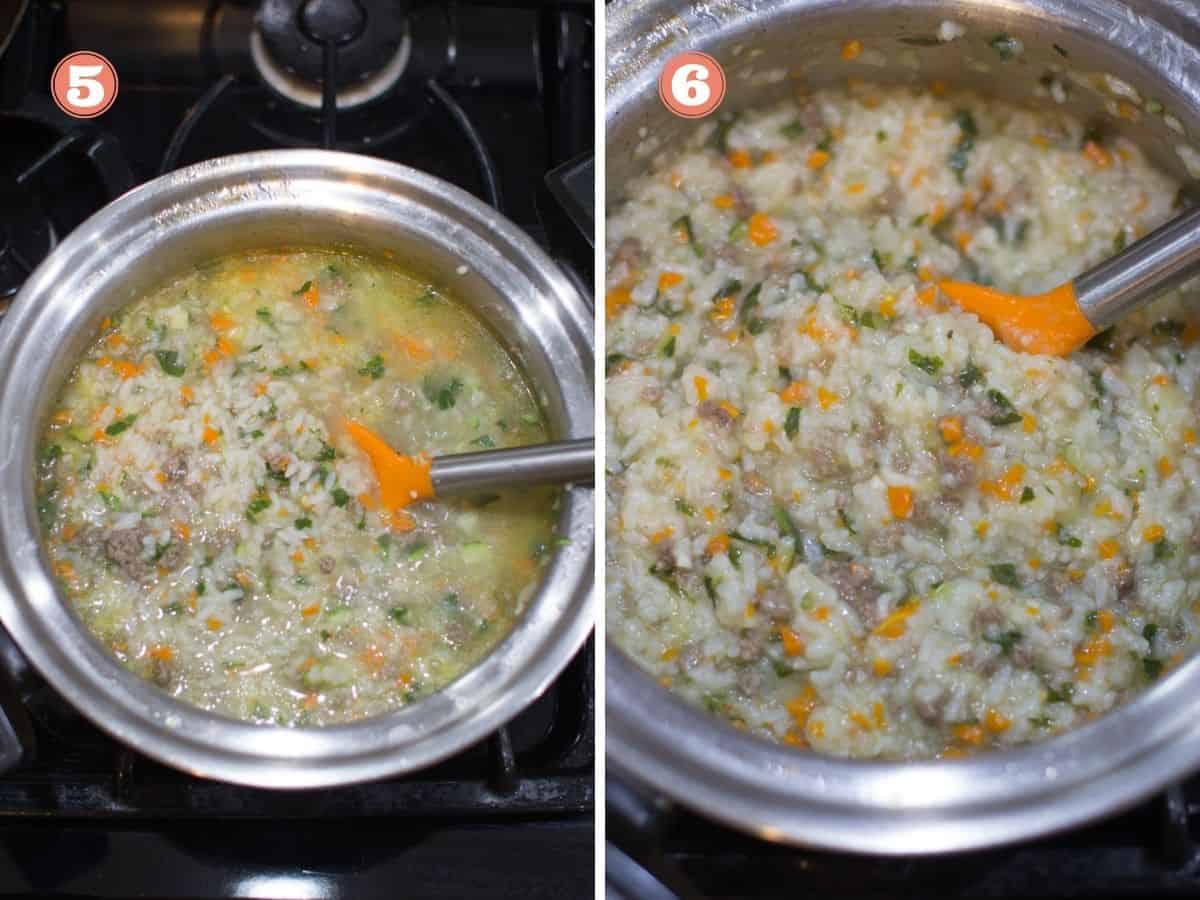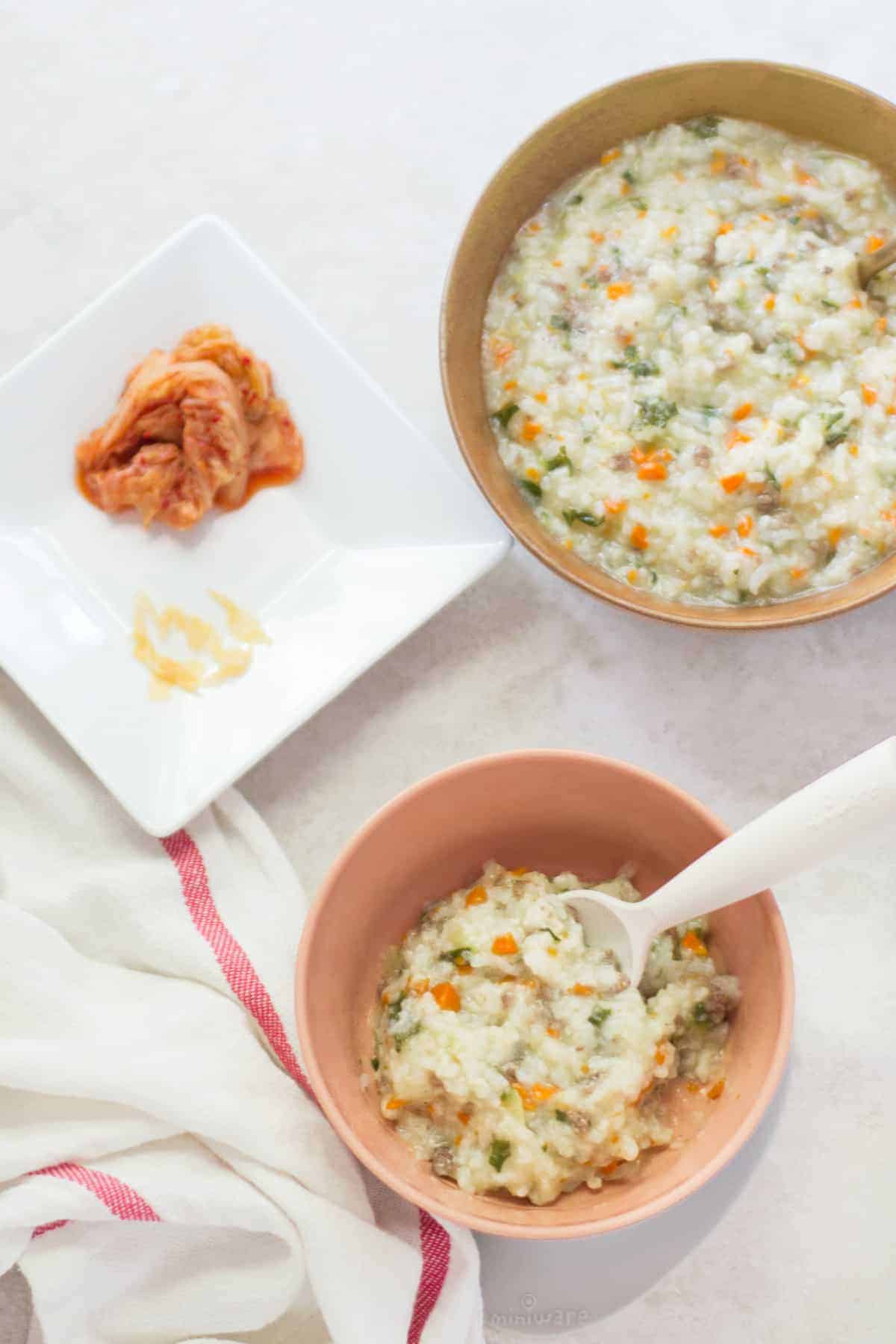While I’m calling it baby porridge, this dish is for all ages! Rice porridge is commonly enjoyed in Asian cultures as a hearty savory breakfast. It’s also our “chicken soup.” Warm and comforting, it’s the perfect meal during an illness. If your child is running a fever, teething, having diarrhea, etc., make this porridge ASAP! Porridge is such a great way to invite variety into your baby’s diet! It can be made with any types meat, seafood, vegetables, and other flavorful toppings. Here I’m sharing a veggie-loaded version with beef!
Is rice safe for babies?
Being Korean, we eat a lot of rice. That’s why when the report about rice containing about 10 times as much inorganic arsenic as other cereal crop came out, my anxiety initially skyrocketed. Perhaps you can relate. Why so much in rice? It’s due to the way they’re grown and rice tend to absorb more heavy metals from the soil in which they are grown. Arsenic is especially concerning for babies and young children as their bodies are so small and therefore getting much higher exposure than the adults. Arsenic is also a neurotoxic compound and thus can lead to impaired brain development. I know. Scary. BUT! don’t let fear get the best of you. I share this information because knowledge is important. It helps us to learn and make informed decisions. What this knowledge further motivated me to do, and I hope it does for you, is to focus on offering a wide variety of grains instead of relying heavily on rice. Overall, oatmeal (we make variations of this ALL the time for a quick breakfast), barley, buckwheat, quinoa, and wheat contain much lower amounts of inorganic arsenic.
How to cook rice for baby 6 months and up
Resource Here’s a simple way you can significantly reduce arsenic from rice while preserving its nutrients. According to the research, parboiling rice removes about 54 percent of arsenic in brown rice and about 73 percent in white rice, while retaining the most amount of the nutrients potassium, magnesium, zinc, phosphorous, and manganese. For this recipe, not only will this extra step remove the arsenic content considerably, it also shortens the cooking time.
Ingredients
Rice – Sushi or jasmine rice will work best. I don’t recommend basmati as it doesn’t break down into a creamy, “gluey” consistency. Vegetables Feel free to use whatever vegetables you wish – bell pepper, broccoli, asparagus, spinach…endless possibilities! You can finely chop using a knife or a food processor. I like to prep a lot while the baby is napping so this manual food chopper is my go-to (affiliate link). It’s super quiet, lightweight, and powerful.
Step-by-Step Instructions
- add parboiled rice
- add the rest of the vegetables
- Add water and cook for 15-20 minutes
- Add a drizzle of sesame oil before serving
Expert tips
It’s important that you stir frequently. The more you do so, the more the rice will break down and become silky. While water is used in this recipe, you can use stock for more depth of flavor. Just be sure to use low-sodium or no-salt-added variety.
Storage Suggestions
Leftover porridge can be stored in an airtight container for up to 5 days. The longer it sits, the thicker it gets. Reheat in the microwave or on the stovetop. Stir in a little water, breastmilk, or formula to loosen it up, if necessary.
How to freeze baby porridge
If intending to freeze, be sure to cool first. Do NOT leave the porridge in the large pot at room temperature to cool. Instead, transfer to shallow containers (I like to divide into single-serving portions) in the fridge before transferring to the freezer. Here’s an in-depth post on how to store leftovers safely and effectively. This baby porridge can be frozen for up to 3 months. Thaw in the fridge overnight.

